Popping in for my weekly update. This week I learned to weave and finished a floor rug for the dining room! Rodd and I made another dessert from the CWA 1965 cookbook – “Coffee Velvet” – which resulted in a FAIL for me and a winning upgrade for him. I shared about the proposed giant hostel for Chippendale, sent my feedback to the City, and blasted it out to my networks. We also started our project to walk all 80km / 50mi from Manly Beach around Sydney Harbour to Bondi. And I spent several days migrating all my Instagram photos over to my blog so I can start the process of deleting my account over there, because the tech broligarchs can SUCK IT. Details on all this over at my blog! https://www.web-goddess.org
-
Shared today on Facebook
I normally consider myself to be a YIMBY. I live in the big city for a reason, and I like amenities. I like new restaurants and bars, and new apartment buildings, and mixed use zoning. But right now I’m flabbergasted by the proposal to turn the old Telstra building on Broadway into the world’s largest backpacker hostel. The hostel would have over 1000 beds, and the DA proposal admits that it would have no car parking and likely hundreds of Uber pick-ups and drop-offs a day. The rubbish generated would be substantial, and waste management is already difficult in a mostly residential neighbourhood with narrow streets. I don’t understand why the City would approve something like this, when there is such a need for new permanent housing in the city. The only public amenity appears to be a rooftop bar. And why put a backpacker hostel here? We aren’t near a beach or anywhere backpackers would presumably like to visit. The suspicion is that it would turn into stealth student accomodation, and that calling it a hostel is a way around planning restrictions. The only people who would benefit from this hostel are the business owners, with everyone else in the neighbourhood forced to deal with an influx of transient visitors who – let’s face it – may not be the most respectful neighbours. If you also think this is a bad idea, please consider making a submission to the City of Sydney via this form. (Deadline is February 4th.)
-

Weaving a rug
“Take a weaving class” has always been on my Retirement To-Do list, and recently I discovered a sustainable weaving studio near my house that offers “Intro to Rug Weaving” classes. The studio is called Ex Materia and it’s run by two amazing women, Su and Anneli. You can do the course over two sessions, but I opted for the “weave a rug in a single day” option. I went in this past Tuesday, and to my delight I was the only student there that day!

Su introduced me to the floor looms, all of which had been brought over from Finland. They had given me a choice of a few different rug patterns ahead of time, and of course I picked the most complicated one. 😂 I also got to choose my colours. The material is actually strips of jersey left over from making t-shirts and other clothing, and it comes on big cones. Su showed me how to wind my shuttles and then start weaving. It took me a while to get the rhythm down, but pretty soon I was flying! I think my knitting experience also helped, as I knew how to count rows and keep my selvedges neat.
The goal was to finish my 70cm rug by 4pm so I’d have time for them to show me how to take it off the loom and finish it. I took a quick lunch break and then went right back to it. It’s rather addictive, seeing the pattern form! I modified the pattern a little bit (mostly because I miscounted and then liked how it looked), and overall the process went really smoothly. By 3pm I was ready to take it off the loom! Su showed me how she weaves a couple rows with the warp threads and then with some spare jersey to stabilise everything, and then I helped her as we cut and tied off the warp threads. And then it was time for the big moment…
Once it was off the loom, we took it over to a work table where Su showed me how to remove the stabiliser sections and knot the warp threads. Then I had a decision to make: what kind of finish did I want? I could leave the warp threads as fringe, or I could weave them into the finished rug to hide them. I opted for the latter, as it would give a cleaner look. Anneli gave me a quick lesson on how to do it.

It turns out that weaving in the ends actually look longer than weaving the rug! I spent many hours over several evenings plugging away at it.
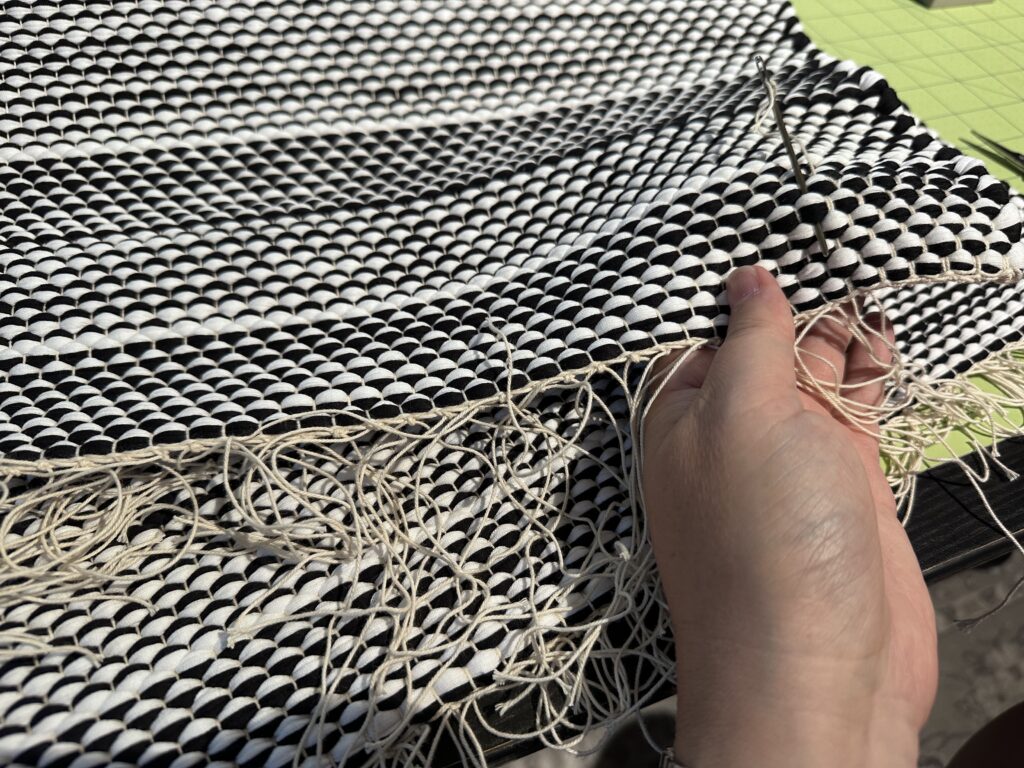
Finally tonight I finished it! Then I put it into place in front of the French doors in the dining room.

Pretty cool! I had a lot of fun, learned heaps, and ended up with a sustainable handwoven rug that, quite frankly, blows away any cheap one I could buy from a shop. Now I just need to figure out how to fit a floor loom into my house. 😂
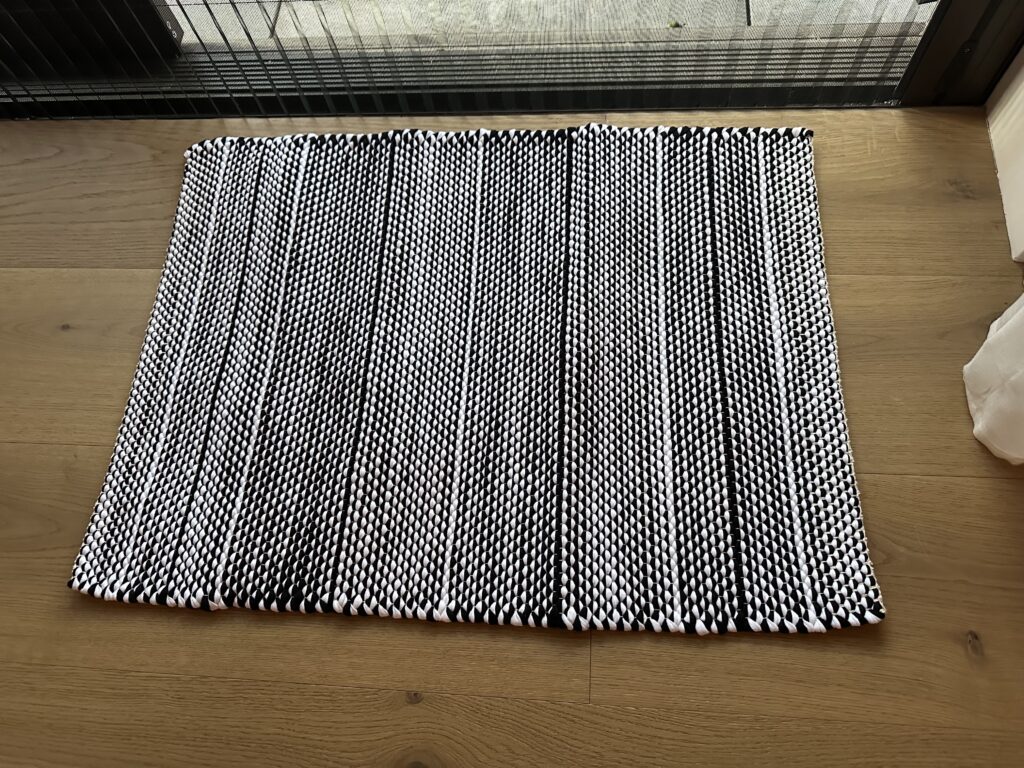
Thanks again to Su and Annali for their expertise (and patience)! I wouldn’t hesitate to recommend Ex Materia’s course to anyone looking to learn a new craft. I found weaving really engaged my whole brain and my body, and I have a newfound appreciation for the skill that goes into creating textiles and the engineering that makes it possible.
-
Regrettably being a NIMBY
I normally consider myself to be a YIMBY. I live in the big city for a reason, and I like amenities. I like new restaurants and bars, and new apartment buildings, and mixed use zoning. But right now I’m flabbergasted by the proposal to turn the old Telstra building on Broadway into the world’s largest backpacker hostel. The hostel would have over 1000 beds, and the DA proposal admits that it would have no car parking and likely hundreds of Uber pick-ups and drop-offs a day. The rubbish generated would be substantial, and waste management is already difficult in a mostly residential neighbourhood with narrow streets. I don’t understand why the City would approve something like this, when there is such a need for new permanent housing in the city. The only public amenity appears to be a rooftop bar. And why put a backpacker hostel here? We aren’t near a beach or anywhere backpackers would presumably like to visit. The suspicion is that it would turn into stealth student accomodation, and that calling it a hostel is a way around planning restrictions. The only people who would benefit from this hostel are the business owners, with everyone else in the neighbourhood forced to deal with an influx of transient visitors who – let’s face it – may not be the most respectful neighbours. If you also think this is a bad idea, please consider making a submission to the City of Sydney via this form. (Deadline is February 4th.)
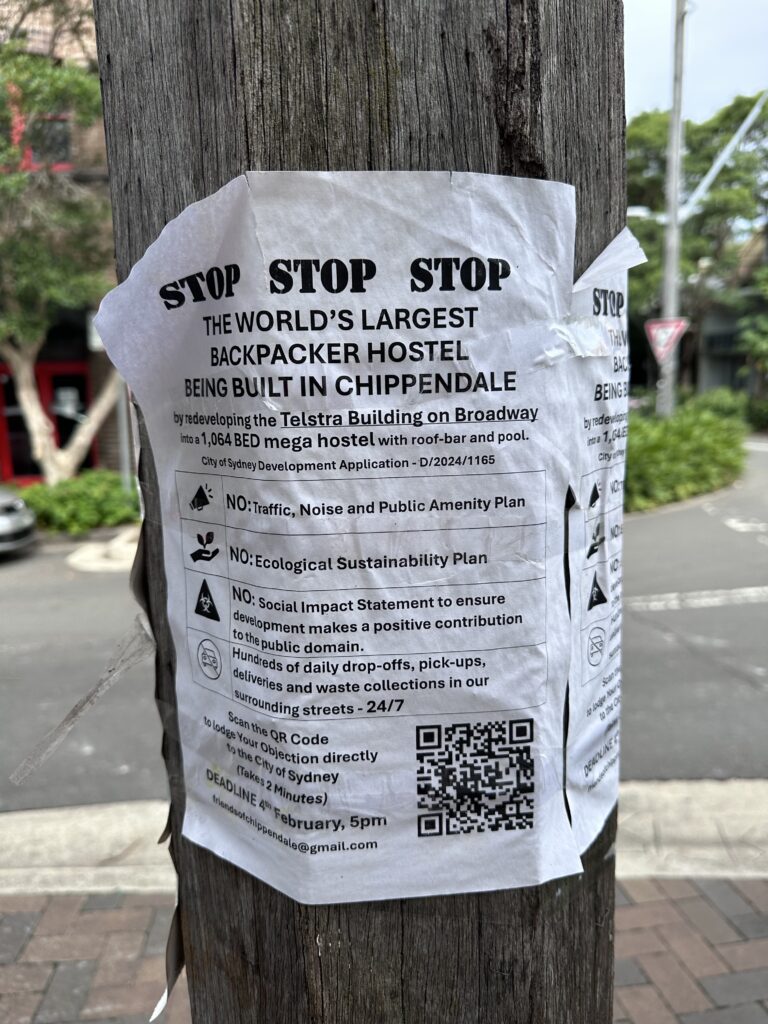
-
Shared today on Facebook
Inspired by Eileen, Rodd and I kicked off a new project to walk all the way around Sydney Harbour – 80km / 50mi. 🥾☀️😅
-

Manly to Bondi Walk – Leg #1
One of my focuses for 2025 was on getting healthy. I’ve been slowly recovering from a hip injury last year (when we moved house) that’s kept me from riding my bike, so I was looking for a more gentle athletic endeavour that would get me out of the house. Meanwhile, one of my college besties Eileen has been working on a project to walk across all of Rhode Island, broken up into day hike chunks. That inspired me to suggest to the Snook that we set a goal of completing the Bondi to Manly Walk.

If you don’t know our fair city, Manly is an ocean beach on the North Head of Sydney Harbour. Bondi is an ocean beach far south of the South Head of Sydney Harbour. Walking from one to the other means hiking along 80km / 50 miles around lots of little harbour inlets and across the a couple bridges, most notably the Sydney Harbour Bridge. There’s an ultramarathon every year where people run this in one go, but it’s much more common to break it up into chunks. The official website offers several different itineraries, and we’ve opted to go with the 7 day version. And just to be contrary, we decided to start at Manly and end at Bondi.
So today, we headed to Circular Quay and caught the ferry to Manly to do our first leg of around 10km. From there we walked down the Corso to the beach, stopping at a cafe for some lunch. We were well-prepared with water, sunscreen, bug spray, hats, and even light jackets. At the beach, I hit Start on Strava and we headed off towards the south end of the beach.

It was a good day for it – not too hot with a nice breeze, and clouds that occasionally let the sun through. As we neared Shelly Beach, we saw signs about protecting the water dragons, and it didn’t take long to spot a real one!

We were also amused to see brush turkeys right there at the beach. This guy was the first of many that we’d see on North Head.

Above Shelly Beach, we found a nice lookout.

The Shelly Beach to Barracks Precinct section felt like a proper hike, scrambling up roughhewn rock stairs or walking along dirt trails. We spotted a huge termite nest up in one of the trees!

At one point, we had to go through a gate in a big stone wall, which let us into the National Park. The trails were wider and easier to follow here. There were constantly seaplanes buzzing around overhead, taking tourists on joy flights. (You can see one above Rodd’s head here.)

We were happily surprised to come upon the Old Quarry Swamp, a “hanging swamp” up really high on top of the Headlands.

But OMG – the spiders. We saw so many huge orb spiders making nests in the trees, sometimes right over the trail we were walking on. In many cases the tiny male was there alongside the ginormous female. There’s one visible just in the center of this next photo.

During WW2, the Aussie military built and manned gun emplacements on North Head in case of Japanese attack. They were actually only ever fired once, and not even at an enemy. You can see the remains of some of the emplacements along the track.
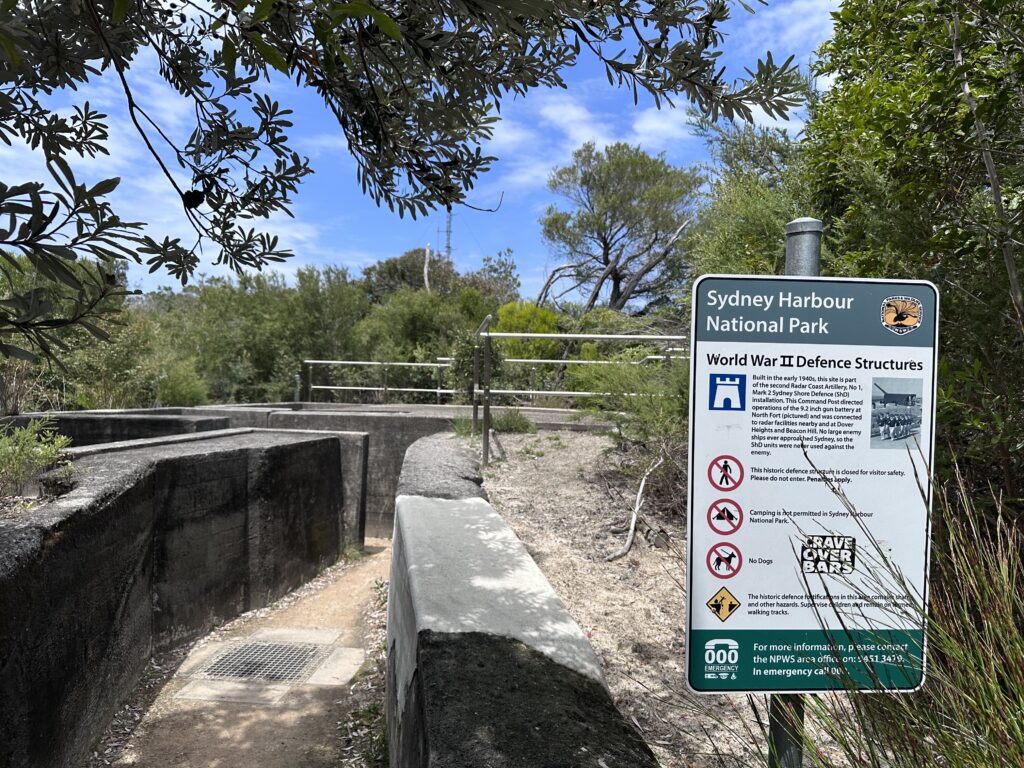
As we got further south towards the Barracks Precinct, the land got wetter and swampier. The track turned into a well-maintained metal grate.

Finally we made it to the Barracks, the former School of Artillery. As we walked in and across the parade ground, Rodd remarked, “I’m pretty sure this was where one of the Biggest Loser seasons was filmed.” Turns out he was right! (They also host concerts up there.)
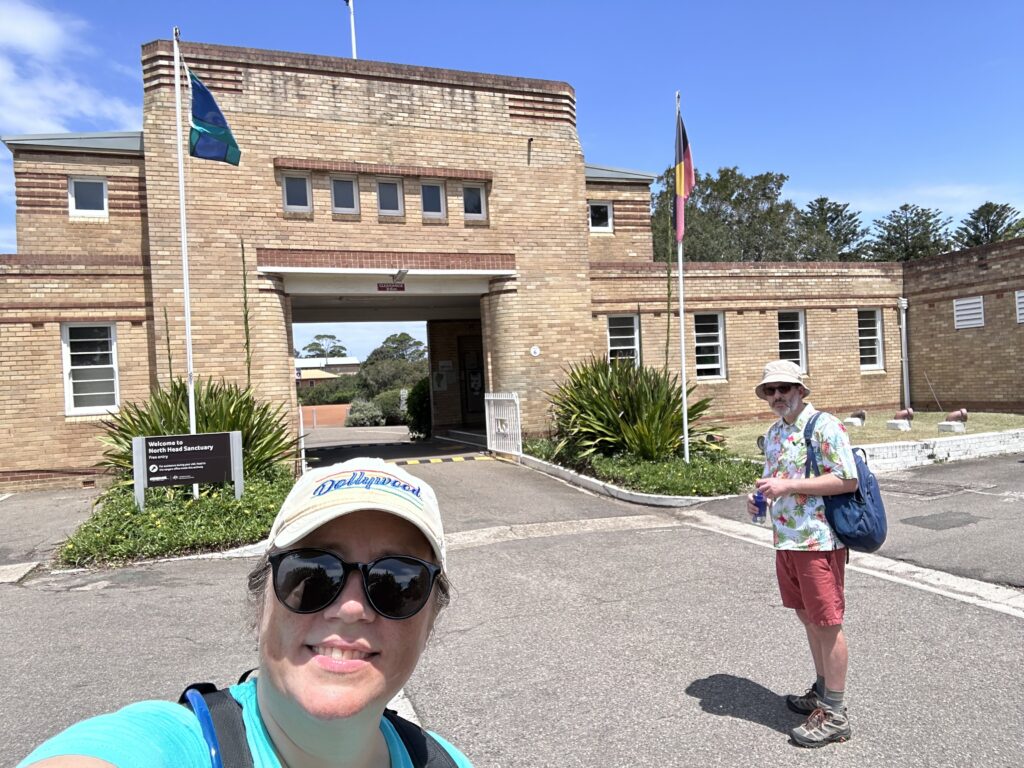
Once inside, we headed southwest and found a lookout back towards the city. It felt very weird to think we would eventually walk all the way there!

Another “attraction” up on North Head is the old Quarantine Station. For 150+ years, this station was used to reduce the risk of ship-borne diseases coming into Australia. Nowadays it’s got a ghost tour, a restaurant, and even accommodation. We didn’t go there, but we did stop for a break near this quarantine cemetery we passed along the track.

As you get further south and closer to the end of the headlands, there’s a Memorial Walk that honours those who have served and supported the defence of Australia in peace or in war. You can nominate a family member who served and pay to have a brick dedicated to them.

The Fairfax Walk is a small loop right at the top of the Headlands with spectacular views. Apparently sometimes you can even see whales? This was the view from Yiningma Lookout, looking north.

And here’s the view from Burragula Lookout, looking back towards the city.

From there we completed the loop back to the Barracks, passing through another hanging swamp. Rodd was trying to spot a frog he could hear croaking when I spotted something slithering next to the metal grate path. “SNAKE!” I said, jumping backwards. We both recoiled at the sight of a long, slender green snake disappearing into the grass. Rodd’s pretty sure it was a tree snake (not venomous, thankfully!), also looking for the frog. It certainly got the heart rate up! 🐍
Once we passed back through the Barracks, we started heading downhill along a winding road towards Collins Beach. It was lined with some very beautiful Sydney red gum trees as well as many other eucalypts.
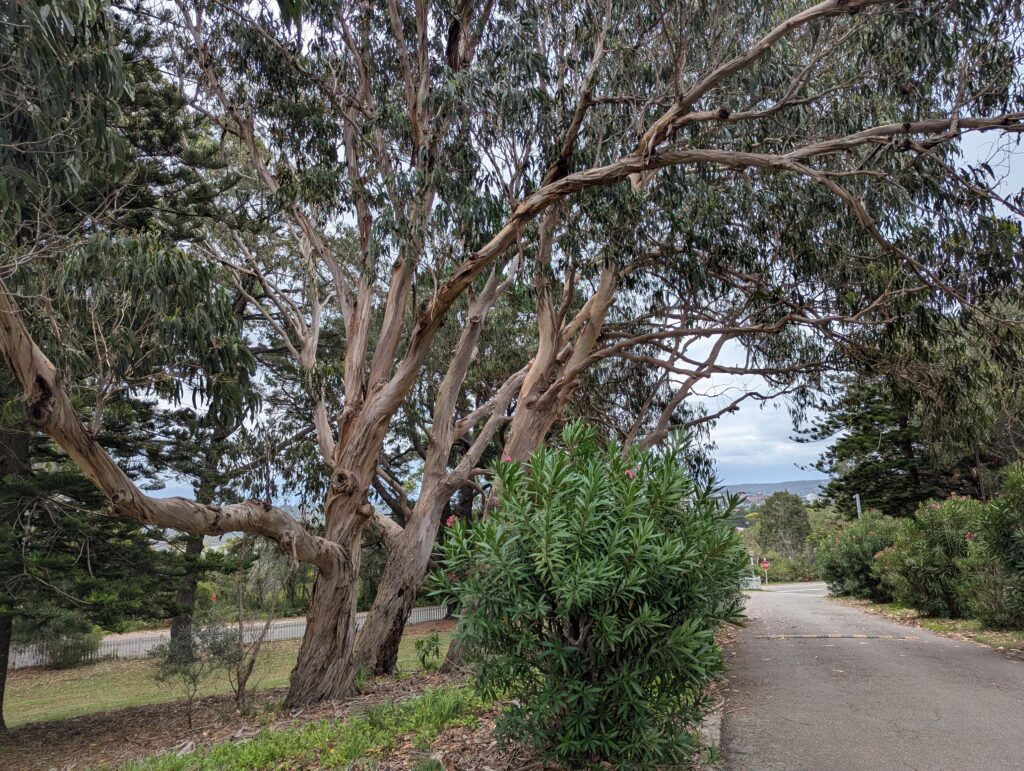
We emerged from the trees at Collins Beach, a sheltered little harbour beach. I couldn’t believe we made it all the way down to sea level again.
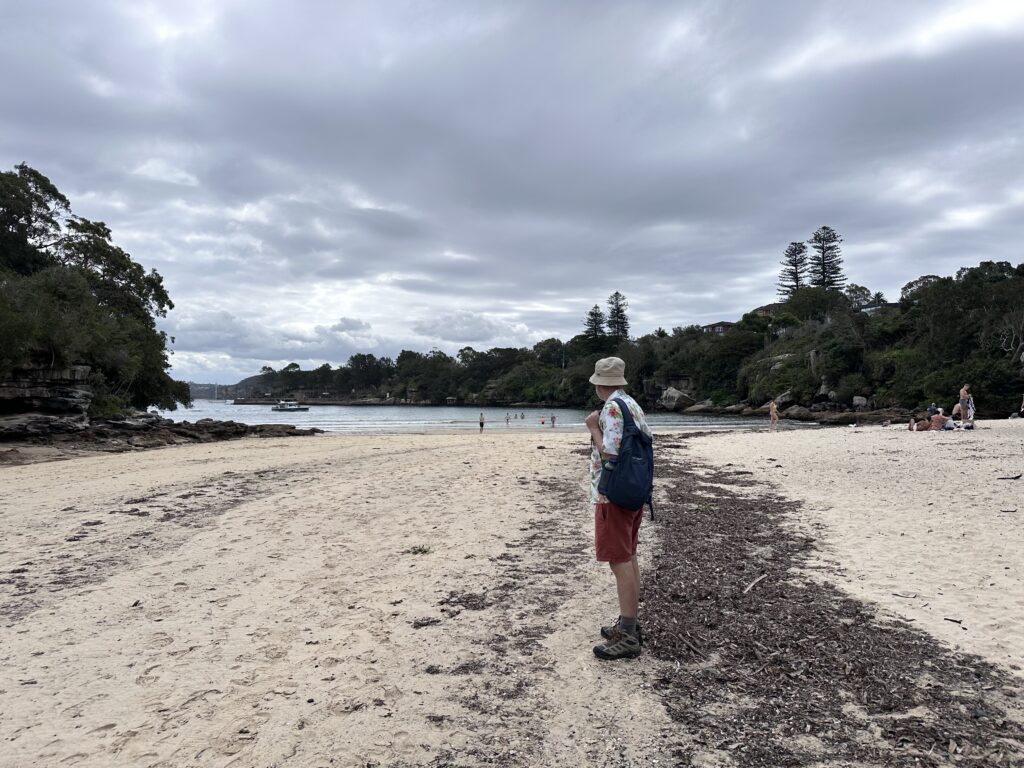
From there we were in much more residential territory. We walked down to the Little Manly Point Park and then around to Little Manly Beach. It has a nice enclosed baths area, and there were some families taking advantage of it.

From there we headed north to Manly Cove. Finally the end was in sight!
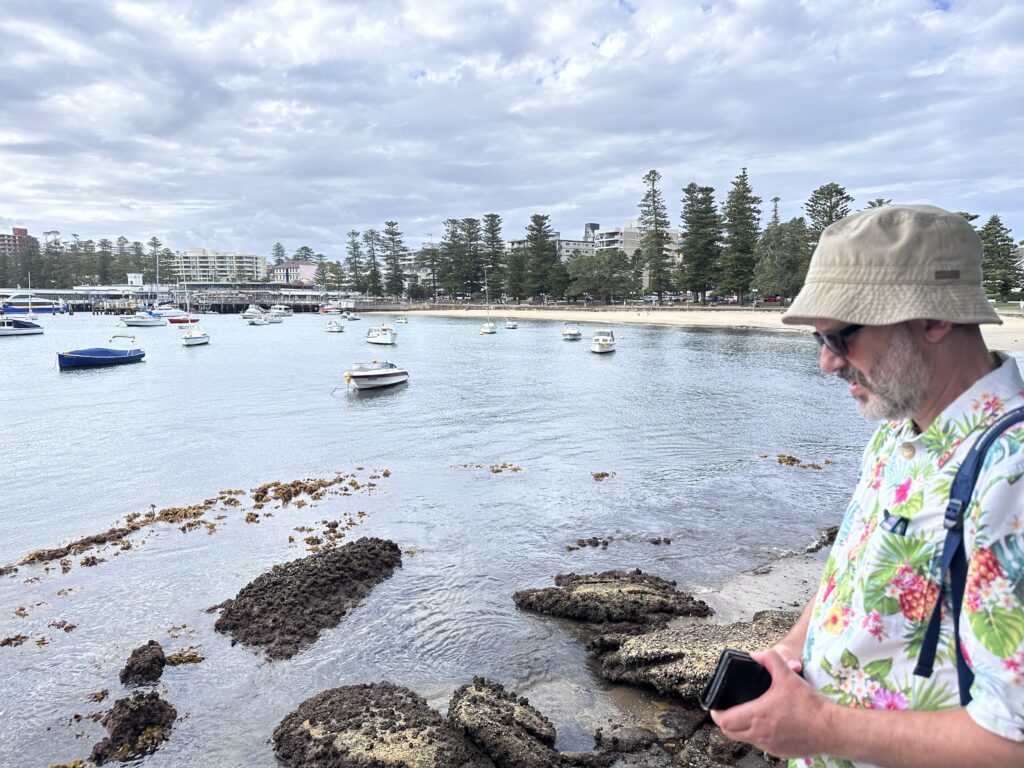
Rodd was entranced by some little crabs chilling on the rocks below.

Tired, sore, and sweaty, we finally made it back to the Manly Ferry Wharf, our designated stopping point for the day. I took a photo to commemorate the milestone and hit Stop on Strava. Then we caught a ferry and began the journey home.

Here’s our Strava map for the day. We recorded a slightly higher distance than the official 10km for that leg, which is probably due to GPS weirdness and with us wandering and backtracking a bit. I’m not sure when we’ll get to Leg 2 – I’m going to need a bit of time to recover! 🙂
-
Fika
We’ve been meaning to get out to Fika in Manly for some time, and today we finally had the opportunity. The cafe claims to be Sydney’s first Swedish eatery, and it’s certainly the only one I’ve ever seen that wasn’t in an IKEA! We had sandwiches for lunch and bought some Kanelbullar (aka cinnamon buns) to take home. Everything was very tasty! 🇸🇪
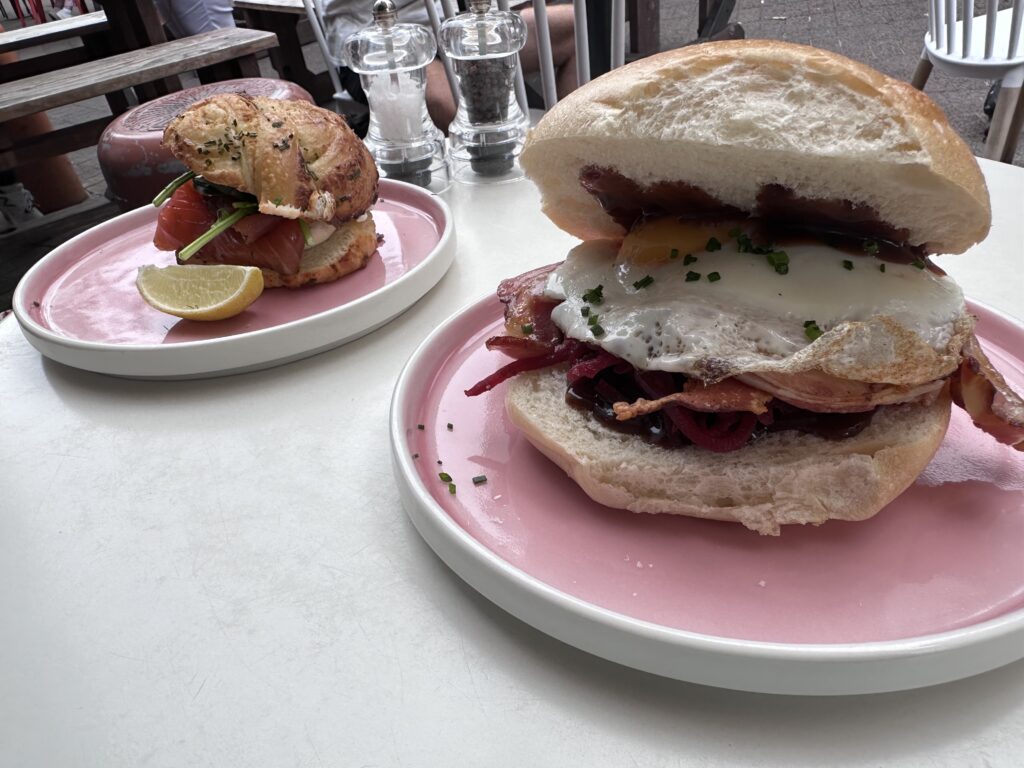
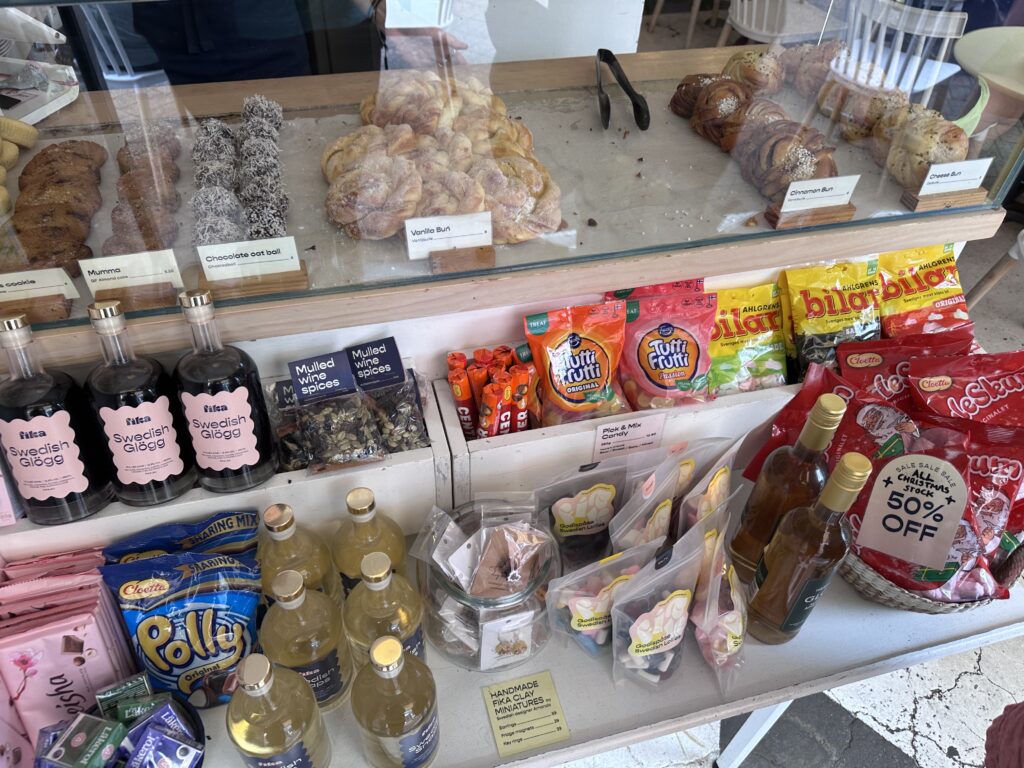

-
How to grow old • Buttondown
A few years ago, I read an article about how FOX News’ goal was to make people afraid to leave their house. (I apologize for not remembering where I read this.) But that line stuck with me. Make people afraid to leave their house. Make people believe that the unknown is scary. Make people believe that otherness is scary.
Source: How to grow old • ButtondownI loved this piece about staying curious, about being open to new experiences, and about the need to protect our entire community. “Even if, and especially when, some of it might have become unfamiliar to us. Because those might be the places where our curiosity takes it tomorrow.”


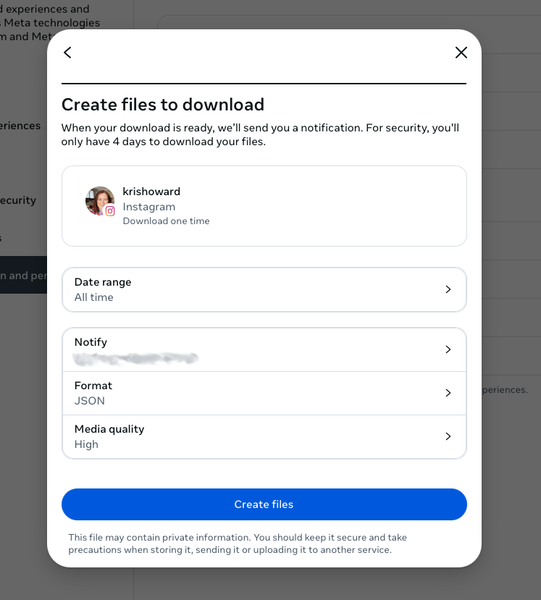
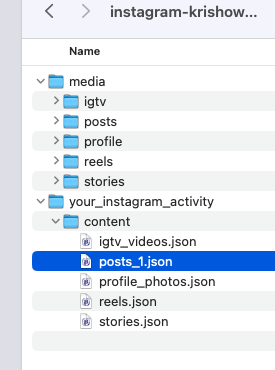



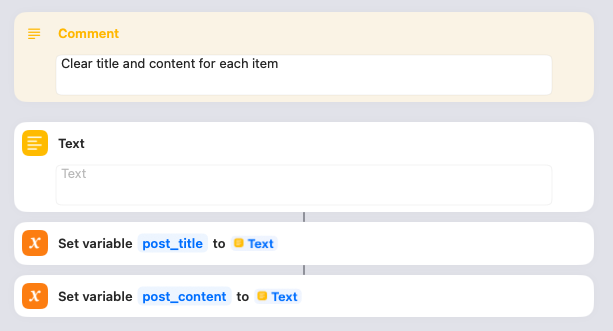


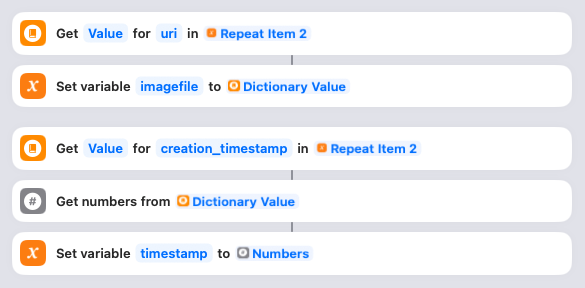

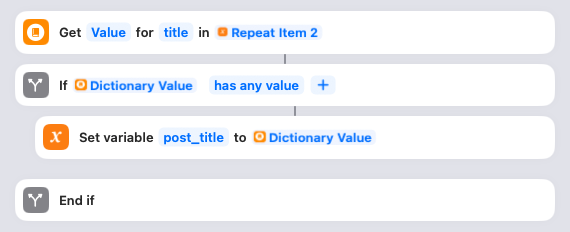
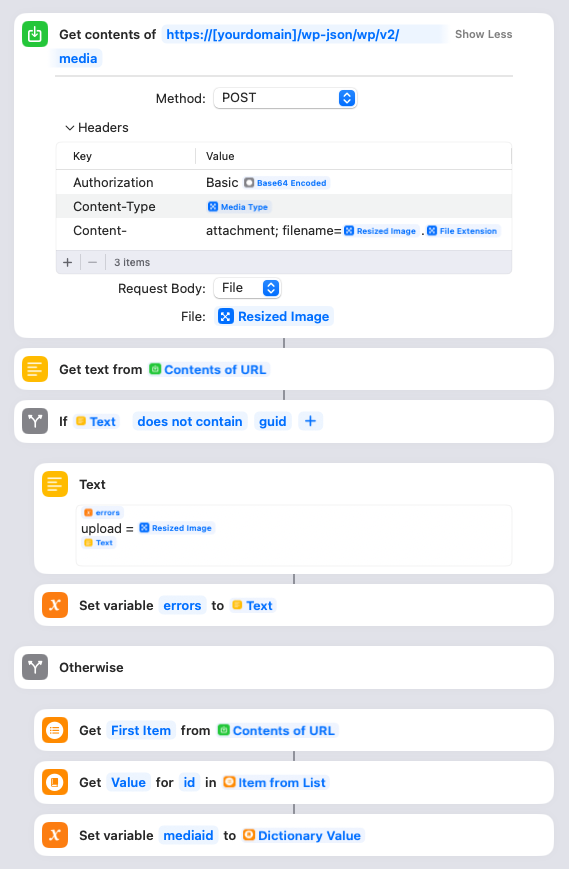
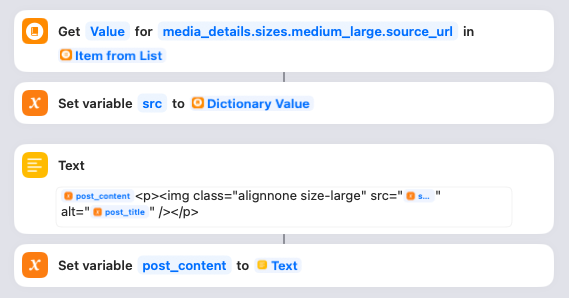





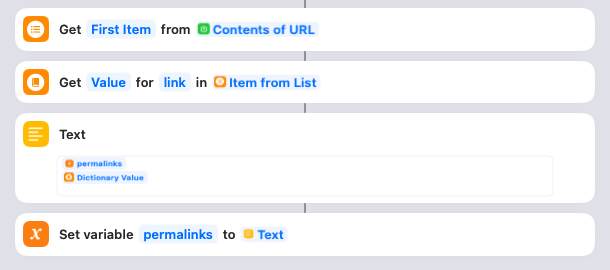




Woot, my knee-jerk don’t-overthink-it pub-quiz answer was Iran which seems to be [✓]. I ‘knew’ it was more populous than…